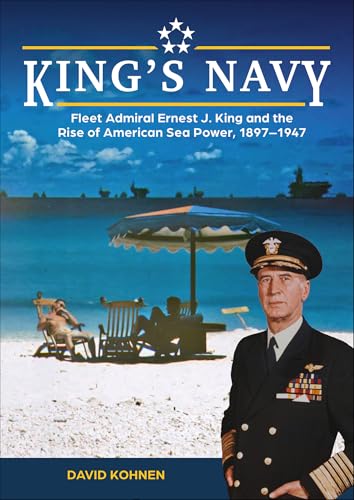
Admirals of the New Steel Navy
by James C Bradford
"Makers of the American Naval Tradition 1880-1930"
Popularity
0 / 5
* A book's popularity is determined by how it compares to all other books on this website.
Where to buy?
Buy from Amazon* If you buy this book through the link above, we may receive a small commission at no extra cost to you.
Admirals of the New Steel Navy by James C Bradford
Details
Perspective:
Commanders
Military Unit:
US Navy
True Story:
Yes
Biography:
No
Region:
North America
Page Count:
381
Published Date:
2013
ISBN13:
9781612512594
Description
Brief Summary
Admirals of the New Steel Navy by James C Bradford is an insightful collection of biographical essays that tracks the evolution of the U.S. Navy during a transformative period from 1880 to 1930. This book continues the narrative set forth in Bradford's earlier works and explores the lives and contributions of key naval figures who navigated the shift from a traditional to a modern steel navy. It encapsulates a critical era when the United States commenced its journey as a significant global maritime power.
Main Themes and Topics
The book delves into the U.S. Navy's evolution, focusing on the technological and strategic adaptations that occurred between 1880 and 1930. Bradford presents a narrative of progression from the age of sail and early steam to the steel warships that defined modern naval prowess. The biographies highlight the vision and leadership of key admirals who were instrumental in this metamorphosis. Themes such as technological innovation, strategic military adjustments, and America's increased global presence are intricately woven throughout the essays. Bradford's work underscores the complex dynamics of adapting to new technologies while maintaining naval traditions and readiness.
Writing Style and Tone
James C Bradford employs a scholarly yet accessible writing style that balances detailed research with engaging narrative. His tone is informative and appreciative, aimed at both enhancing the understanding of naval history enthusiasts and meeting the interests of academic readers. The essays are well-structured, offering clear insights into the personal and professional lives of the admirals without overwhelming the reader with technical jargon. Bradford's narrative adeptly combines historical context with biographical details, making the book both an educational and enjoyable read.
Criticism
While the book is praised for its thorough research and engaging writing, some readers may find its focus on biographical sketches limiting in scope. The depth of individual profiles comes at the expense of a broader analysis of naval strategy and technological specifics during the period. Additionally, readers seeking a purely operational history of the navy's developments during this era might find the emphasis on personal narratives somewhat less satisfying.









